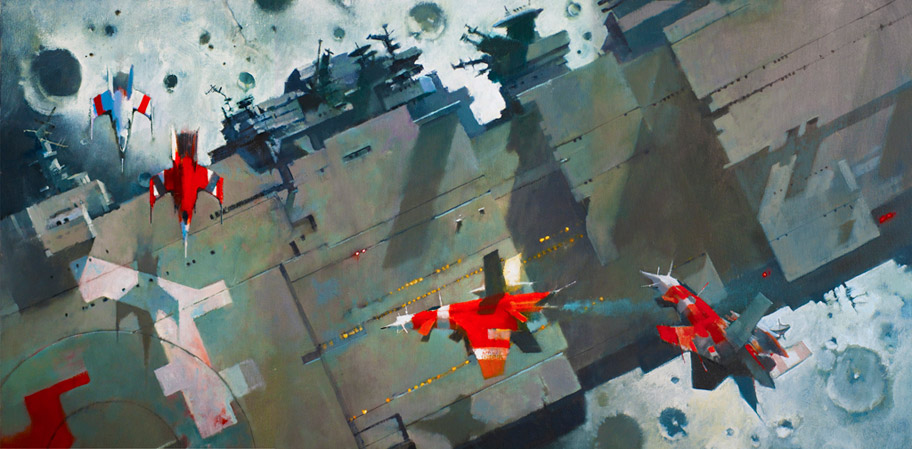Art is important. It’s important socially and culturally and, when it comes to publishing, commercially. The cover art is the first thing a potential reader reacts to. It’s what convinces that consumer to pick up a book, turn it over, and see what’s going on the page. It’s been argued that with declining shelf space in traditional retailers that maybe art is becoming less important to the buying process. The argument is the digital retailer is relying on crowd sourced reviews, and blog commentary, and algorithms to help today’s reader make a purchasing decision. What used to be a full size 6 x 9 inch image is now a 150 pixel thumbnail.
Nothing in the last two sentences is wrong, but it’s also bullshit.
Art in publishing is as relevant today as it was ten years ago. In fact, it’s probably more important now. The market is saturated. More books are being published every year and in the era of self-publishing, art is one of the most visceral discerning features we have to differentiate something as a professional product.
I bring this up not so much to have a conversation about the importance of cover art, and the tragedy of ninety percent of self-publish covers, but to extol the virtues of one of the finest purveyors of cover art in the business—Orbit Books. Led by art director Lauren Panepinto, Orbit has pioneered new and bold approaches to science fiction and fantasy art. Using photography, graphic design, and unique illustrators, Orbit has something few publishers can claim, an artistic voice.
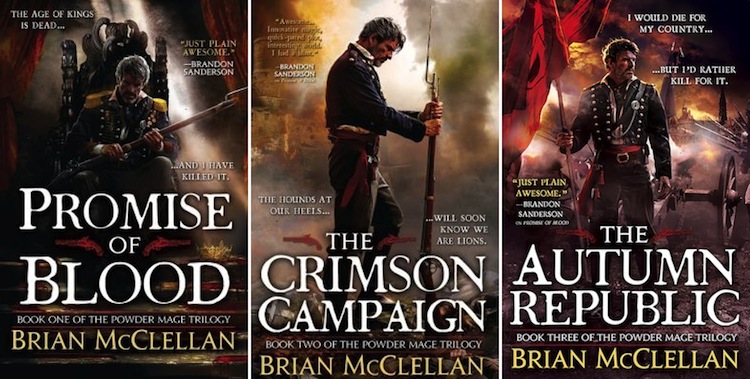
One of the most recognizable set of Orbit covers are Brian McClellan’s Powder Mage Trilogy. Starting with Promise of Blood, contunuing with The Crimson Campaign, and concluding with The Autumn Republic (publishing February 2015), Gene Mollica and Michael Frost created this combination of photography and illustration, using McClellan’s main character Field Marshall Tamas. Personally, I find the first cover the most compelling, with a man at the end of his prime sitting on a throne, exhausted but committed.
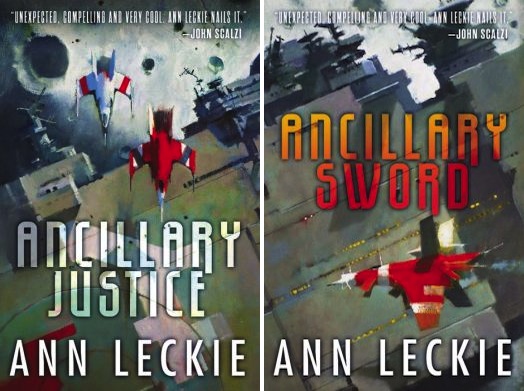
Although Orbit has become known for this photography/illustration combination, used previously on Michael J. Sullivan, David Dalglish, Gail Carriger, and Jaye Wells titles, there’s also a commitment to traditional illustration. Best demonstrated by the John Harris covers done for Ann Leckie’s Imperial Radch series (the multi-award winning Ancillary Justice, and the forthcoming Ancillary Sword and Ancillary Mercy), the Orbit team decided to divide the painting into three separate covers with a different slice for each book, moving left to right. Harris’ covers always have this incredible sense of proportion that communicates the vastness of space. Tiny space ships against the backdrop of a massive station and a moon beneath it seem to analogize the struggle the novel’s protagonist must survive to take down an empire.

And then, there are covers like Mira Grant’s recent Parasitology books, which are purely graphic. Simple, but elegant, the first novel, Parasite, is a pharmaceutical sleeve complete with perforated tear lines and trademark stamped pills. Its sequel, Symbiont (publishing November 2014), features petri dishes or microscope slides. In both cases the message is “medical thriller,” but one you’ve not seen before. The vertical type, forcing the reader to tilt their head creates the sense of newness and interest in what is otherwise an easy cover to gloss over. It invites a closer look. In other words, it does exactly what a cover has to do.
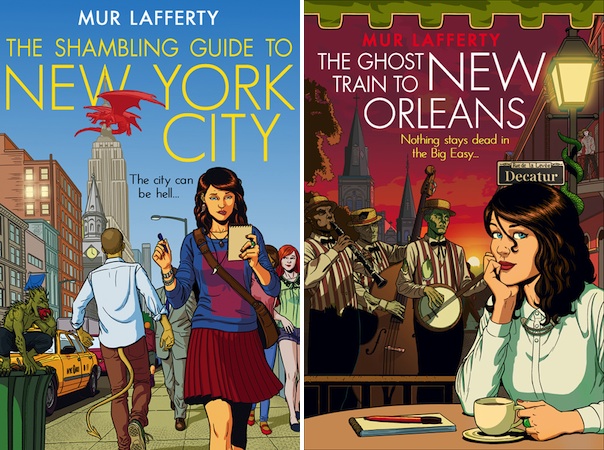
There’s traditional illustration like the Harris covers above, and there’s non-traditional, which Orbit is never afraid to play around with. For Mur Lafferty’s supernatural travel series (The Shambling Guide to New York City and The Ghost Train to New Orleans), they called on comic artist Jamie McKelvie. The joy in these covers really takes my breath away. They’re light hearted and whimsical and do a tremendous job of connecting with the underlying text.
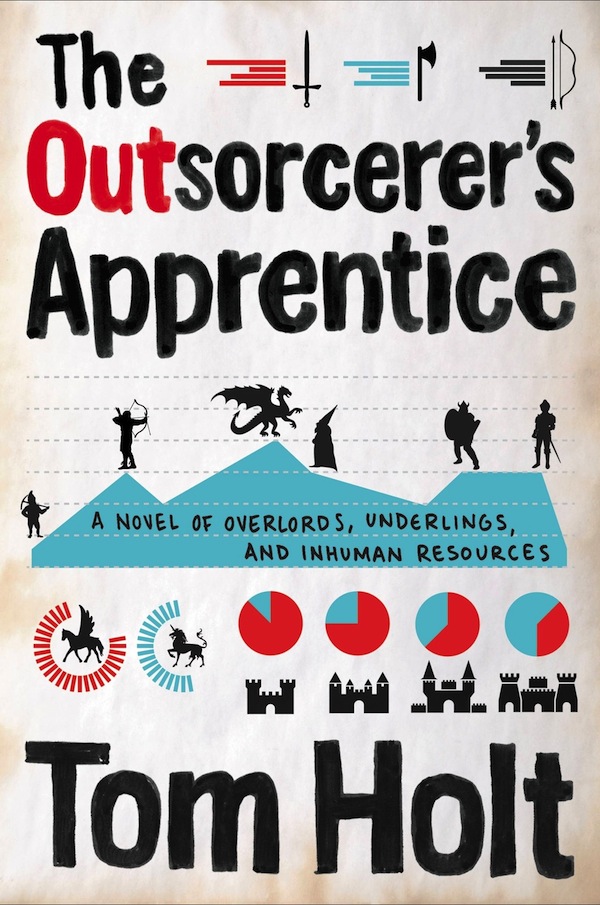
Speaking of whimsical, Tom Holt’s forthcoming novel The Outsorcerer’s Apprentice (with the tagline of “A novel of overlords, underlings, and inhuman resources”) has a delightfully silly illustration. Random fantasy themed silhouttes with lines graphs and pie charts and infographics is simply brilliant. It isn’t just the execution that makes this cover so great, but the creativity that sits beneath it. It demonstrates not only a great talent for making art, but a talent for understanding what the right art is for each project. It’s a theme I notice with Orbit not just in the art department, but throughout the imprint. They demonstrate an understanding of how each book is unique and demands a different kind of treatment, whether it be artistic or marketing.
Now, in case you’re thinking I’m overly indulging Orbit, not all of their covers strike me as perfect. Take David Dalglish’s A Dance of Ghosts, forthcoming in November 2014:
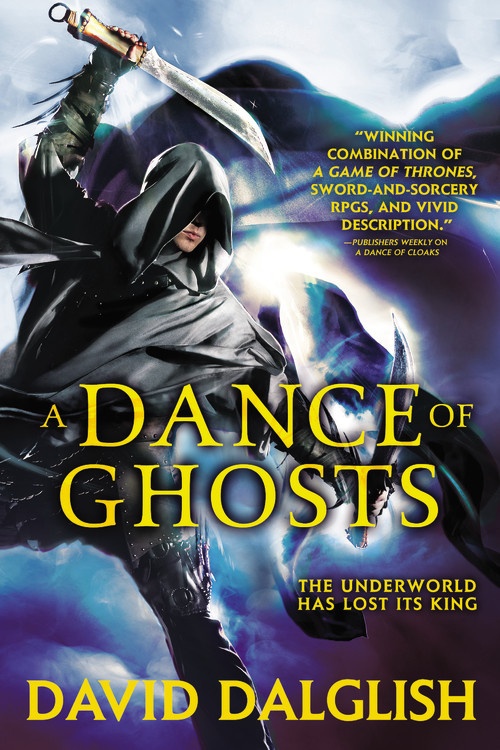
But, let’s leave this look at Orbit’s cover art on a more positive note. I give you the cover for Will McIntosh’s Love Minus Eighty, which is, in my humble opinion, one of the most incredible covers we’ve seen in recent memory:
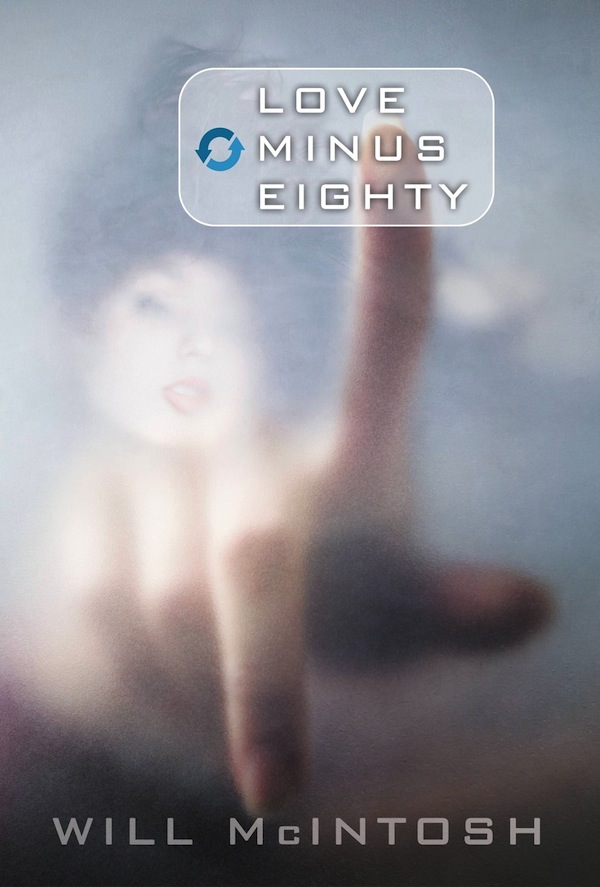
It goes beyond the beautiful photography by Erin Mulvehill because the Orbit design team separated the type from the image by using a transparent vellum dust jacket. The woman, reaching out to press a button to start something, is literally reaching out to the reader. If you’ve read the novel, you’ll understand how heart-wrenching a concept is.
Most important for this discussion, though, is how conceptually daring this kind of design is. It shows me a publisher who isn’t just churning out product to make a buck. It shows me a publisher committed to its readership and its creative team. It’s committed to the commercial realities of publishing, but also to the artistic one. Because say what you will about books as a business, they’re also an art form. And a publisher that recognizes the synergy between those two facets is worth supporting.
Justin Landon runs Staffer’s Book Review where his posts are less on-color. Find him on Twitter for meanderings on science fiction and fantasy, and to argue with him about whatever you just read.










